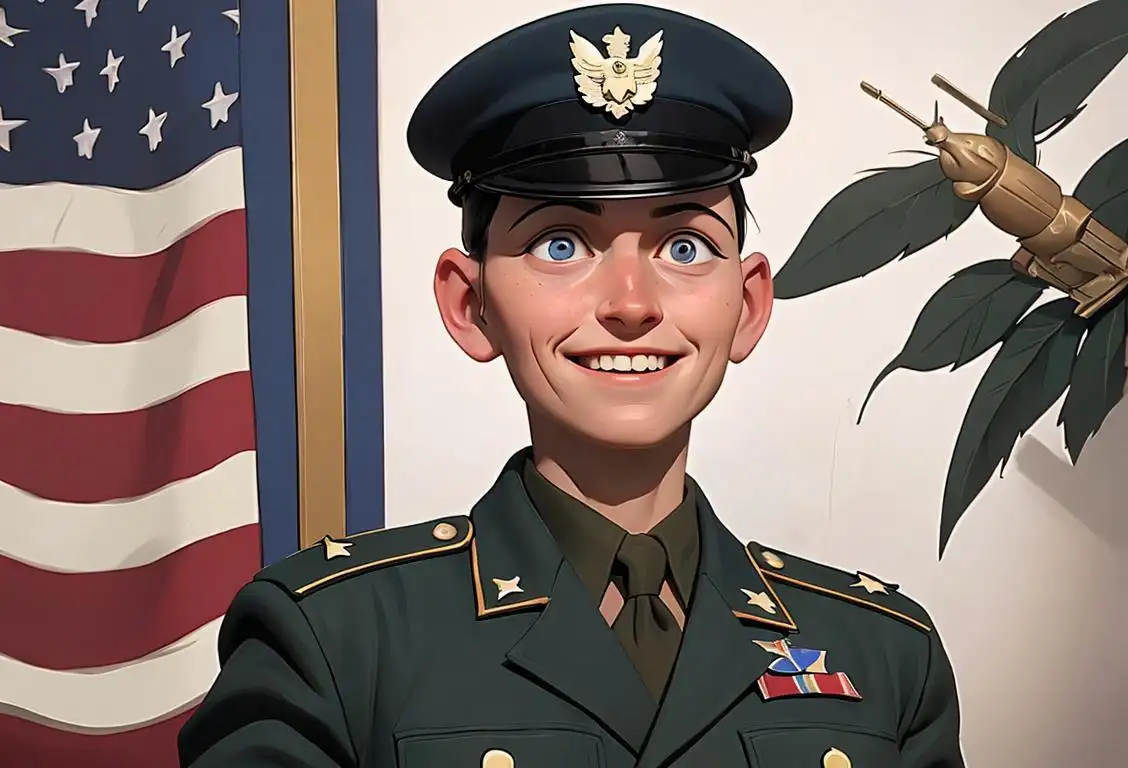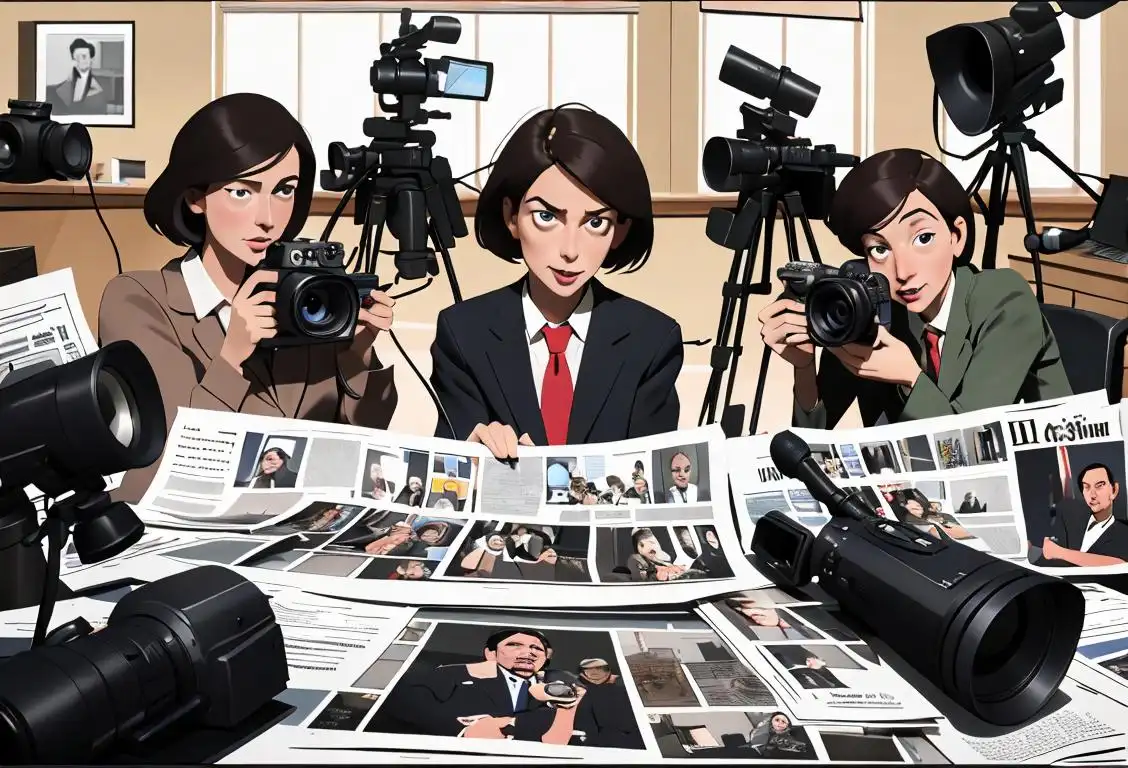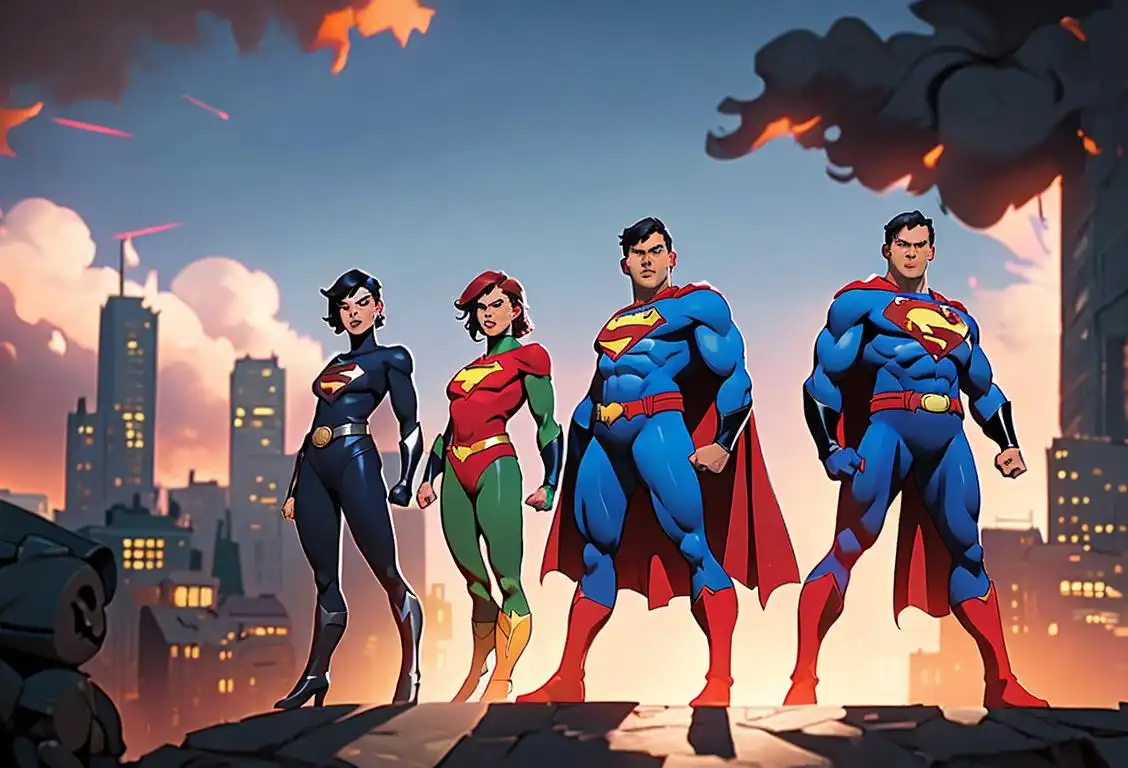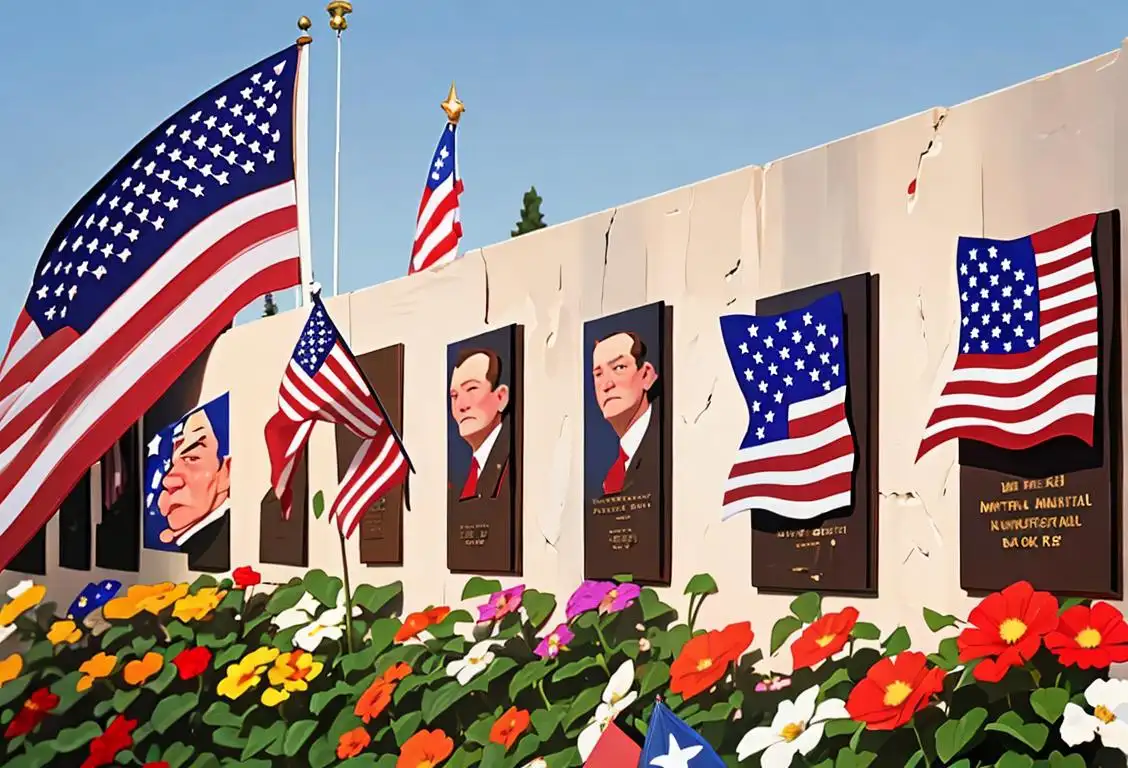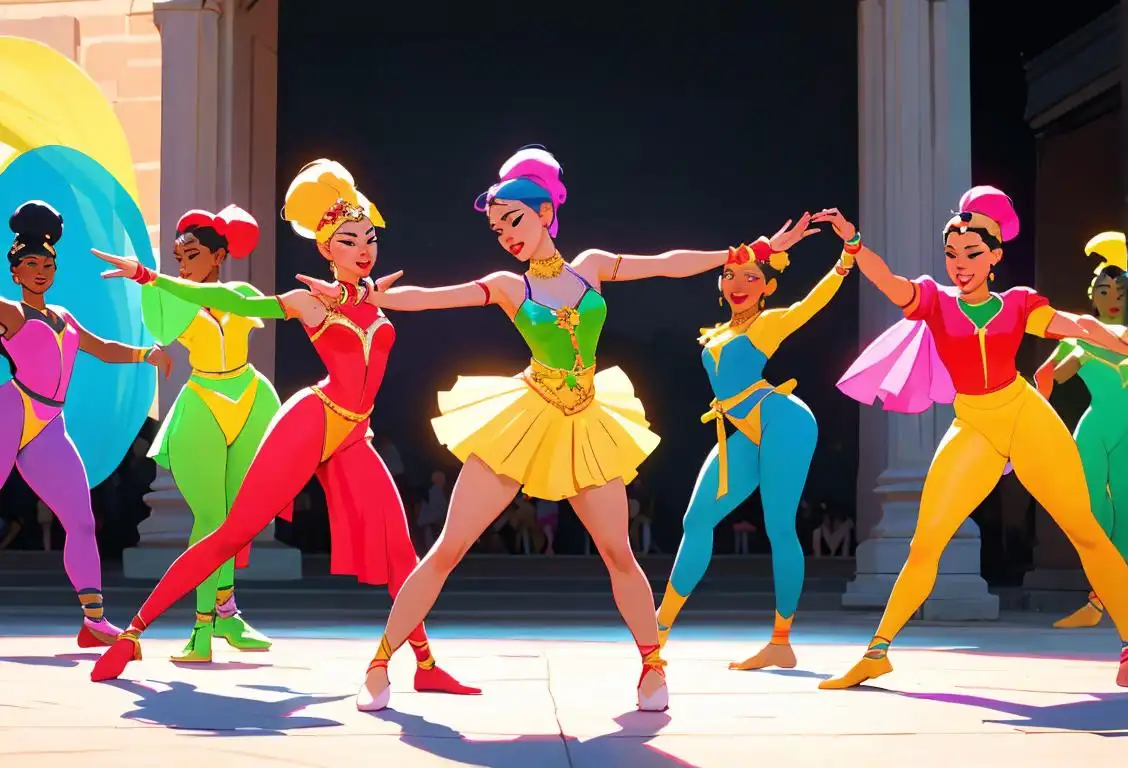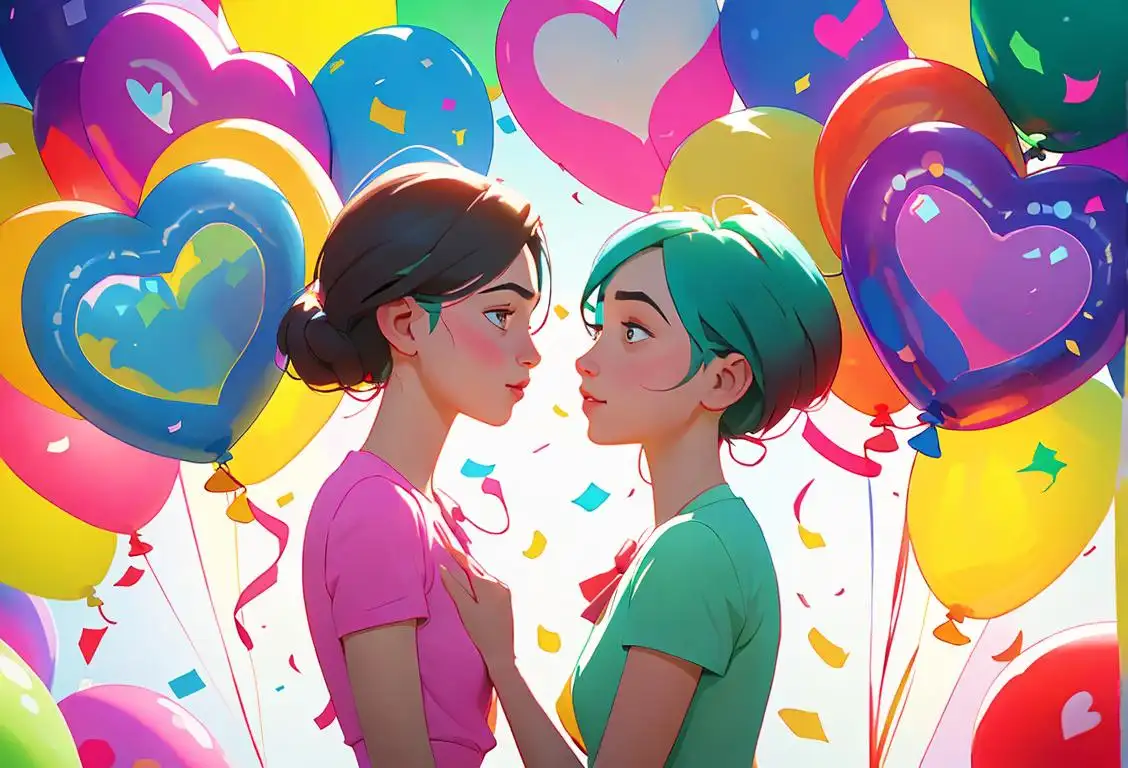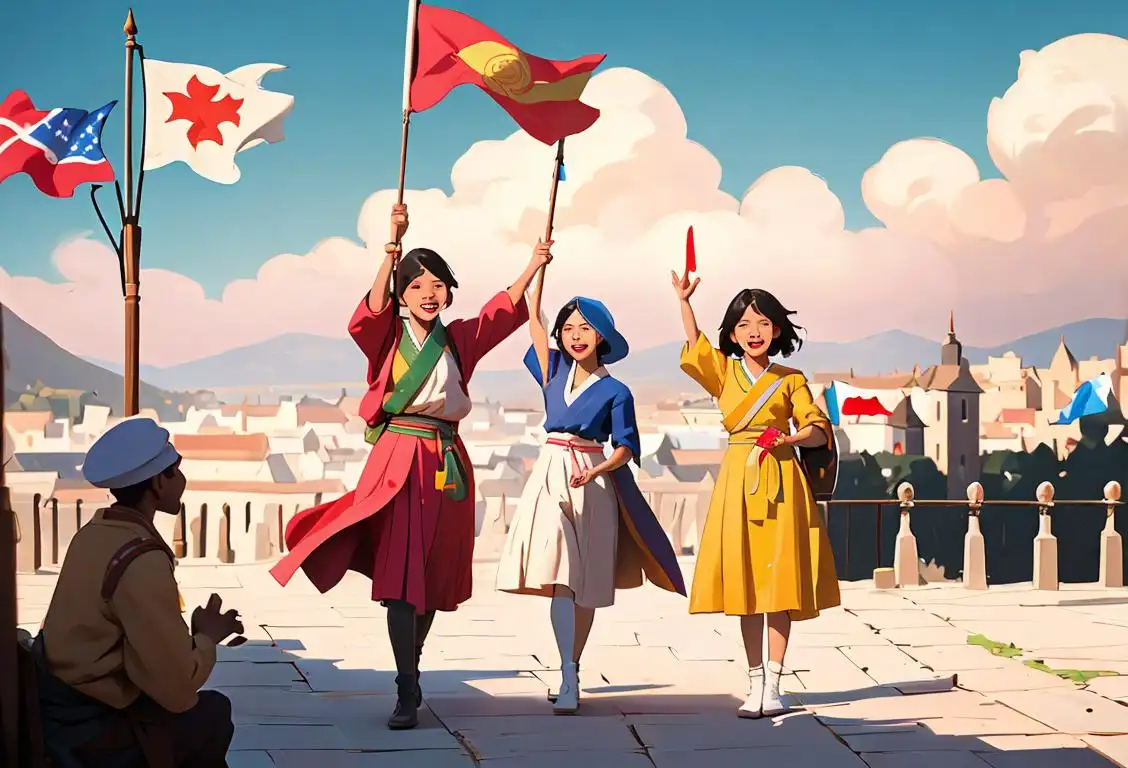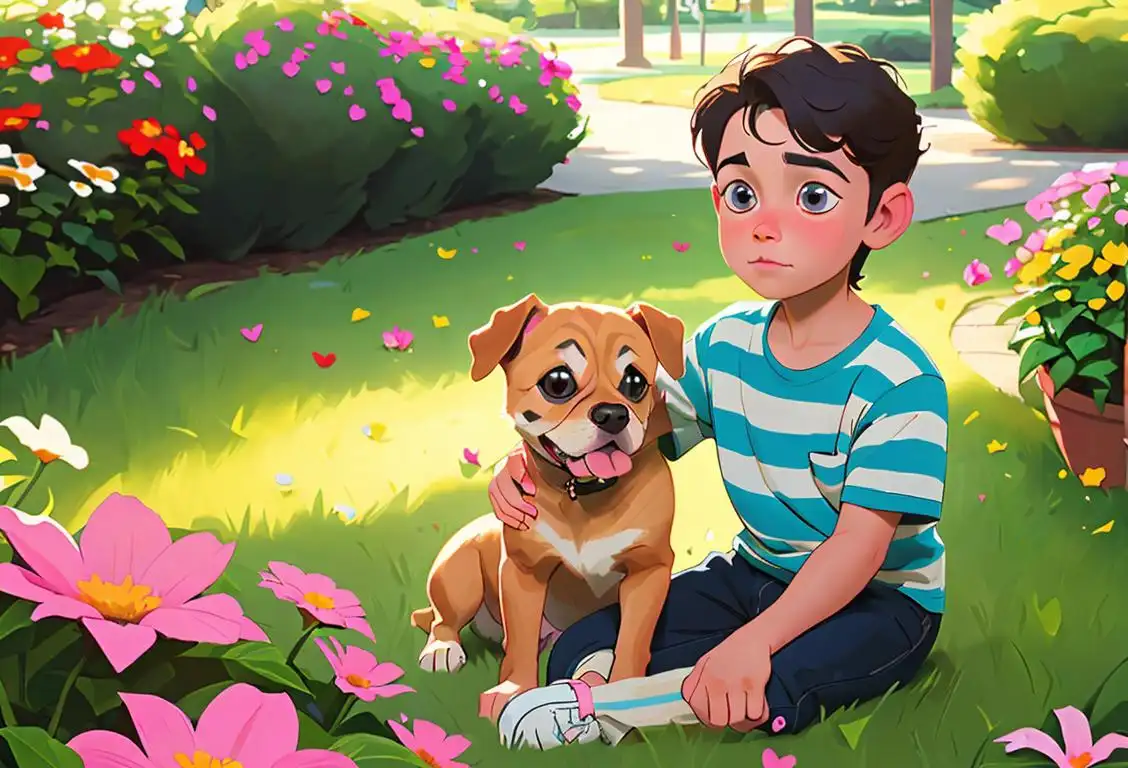National Ghost Day
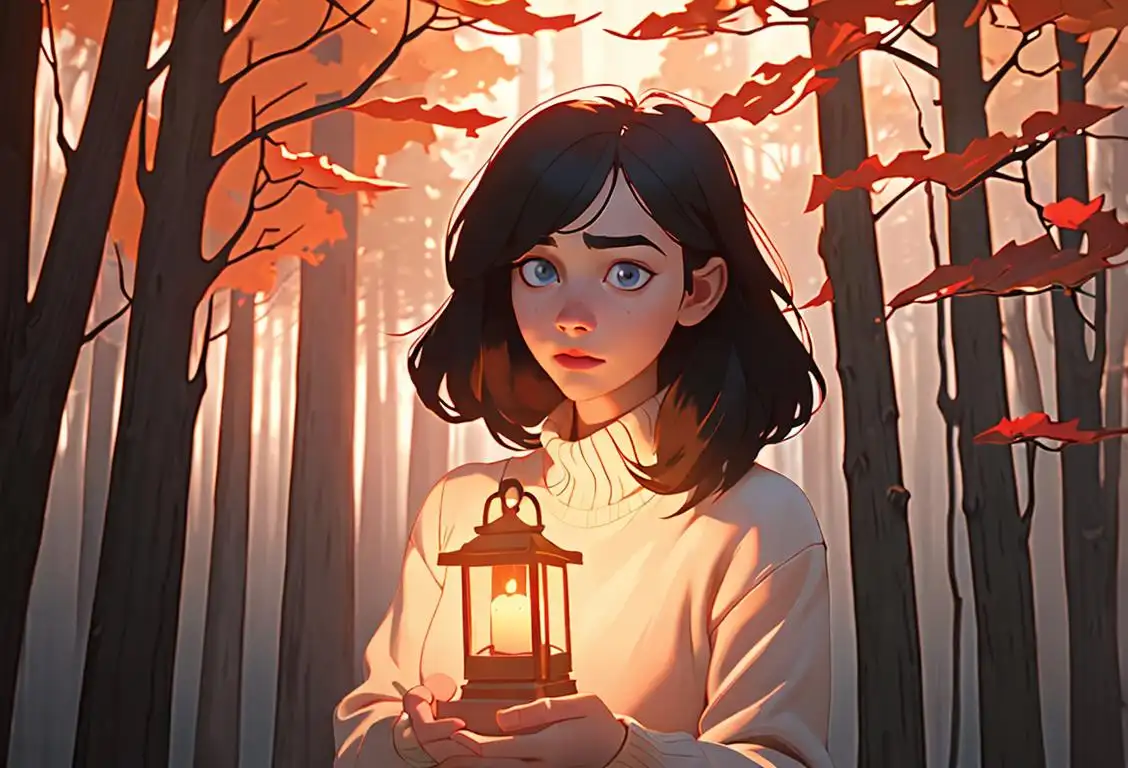
Welcome to the spooky and spine-tingling world of National Ghost Day! Get ready to dive into the realm of the supernatural and learn about the internet history of this thrilling holiday.
When is Ghost Day?
It's national ghost day on the 6th August.
The Origins of National Ghost Day
Every year on August 6th, people from around the world gather to celebrate National Ghost Day. But where did this spooky holiday originate? While the exact origins are shrouded in mystery (just like the ghosts themselves), it is believed that the holiday was first celebrated by ghost enthusiasts who wanted to honor and pay tribute to the spirits that allegedly roam among us.
Throughout history, people have been fascinated by the supernatural. Ghost stories have been told around campfires, passed down through generations, and shared online. National Ghost Day is a way to embrace and celebrate this fascination, allowing us to come together and appreciate the eerie and mysterious.
How to Celebrate
So, you want to join in on the ghostly festivities? Here are a few ways you can celebrate National Ghost Day:
- Dress up as your favorite ghostly character – whether it's Casper the Friendly Ghost or the Headless Horseman, let your imagination run wild!
- Host a spooky movie marathon – grab some popcorn and invite your friends over for a night of spine-chilling films.
- Take a ghost tour – many cities offer ghost tours where you can explore haunted locations and learn about their spooky histories.
Did You Know?
Did you know that there is a famous ghost story associated with the White House? Many people claim to have seen the ghost of Abraham Lincoln, who is said to wander the halls of the iconic building. Talk about a presidential haunting!
History behind the term 'Ghost'
900s
The Origins of 'Ghost'
The term 'ghost' originated from the Old English word 'gāst', which can be traced back to the 900s. In Old English, 'gāst' referred to an immaterial spirit or soul, often associated with the deceased or supernatural beings. This term evolved from the Proto-Germanic word 'gaistaz', meaning 'terrifying apparition' or 'frightening spirit'. It is fascinating to see how the original meaning of 'ghost' emphasized the fear and mystery surrounding these beings.
2000 BC
Ancient Beliefs
The term 'ghost' finds its origins in ancient cultures that believed in the existence of spirits or souls of the deceased. In ancient Egypt, the word 'ghost' was linked to the concept of the ka, an eternal spiritual duplicate of the deceased that could interact with the living world. Similarly, in Mesopotamian and Greek cultures, the idea of restless spirits haunting the living was prevalent.
1200-1300 AD
Origins in Old English
The term 'ghost' finds its origins in the Old English word 'gāst,' which referred to the spirit or soul of a deceased person. In Old English, 'gāst' was commonly used to describe both benevolent and malevolent spirits that were believed to exist after death. These spirits were thought to have the ability to interact with the living.
900s AD
Arrival of the Term
The term 'ghost' originated in the 900s AD with the Old English word 'gāst', which meant 'spirit' or 'soul'. In medieval times, the word was often used to describe the concept of an apparition or the spirit of a deceased person believed to appear to the living. This term has since evolved to become synonymous with supernatural entities and otherworldly phenomena.
14th Century
Ghostly Appearances in Literature
During the 14th century, ghostly appearances and encounters started to gain prominence in literature. In works such as 'Sir Gawain and the Green Knight' and 'Hamlet,' ghosts played significant roles, leading to increased fascination and speculation about the supernatural. This period contributed to shaping the popular image and perception of ghosts.
850 AD
Old English Influence
The term 'ghost' originated from the Old English word 'gást,' which meant 'spirit' or 'soul.' The Old English word later transformed into 'gost,' which eventually became 'ghost.' During this period, the word commonly referred to the spirit or soul of a deceased person or a supernatural being.
14th Century
Ghost Stories and Hauntings in Literature
During the 14th century, ghost stories and tales of hauntings gained popularity in literature. Writers like Geoffrey Chaucer and William Langland incorporated ghosts into their works, contributing to the cultural fascination with supernatural entities. These literary portrayals of ghosts often presented them as restless spirits, seeking resolution for past deeds or seeking revenge on the living. This era marked the beginning of ghostly narratives becoming an integral part of storytelling and folklore.
14th Century
Ghostly Interpretation
During the 14th century, the idea of ghosts became more prominent in European folklore and literature. Ghosts were often depicted as translucent or shadowy figures, representing the souls of departed individuals seeking resolution, vengeance, or redemption. This portrayal of ghosts greatly influenced the cultural perception of these otherworldly beings.
14th Century
Phantom Apparitions
During the 14th century, the term 'ghost' gained popularity in Europe, particularly in connection with sightings of phantom apparitions. Ghosts were often associated with hauntings and were believed to be the spirits of the departed who had unfinished business in the mortal realm. These apparitions were seen as ethereal entities capable of interacting with the living.
19th Century
Victorian Ghost Stories
The 19th century brought about a fascination with ghost stories. This fascination was particularly notable in the Victorian era, as people delighted in sharing and reading eerie tales of supernatural encounters. Notable authors such as Charles Dickens and M.R. James contributed to the popularity of ghost stories during this time, solidifying the ghost's place in popular culture.
16th Century
Emergence of Ghost Stories
The 16th century witnessed a surge in the popularity of ghost stories. The spread of printing press technology enabled the mass production and dissemination of works such as 'Daemonologie' by King James VI and I. This treatise on witchcraft and demonic entities included references to ghosts, further fueling public interest in spectral beings.
19th Century
The Rise of Spiritualism
In the 19th century, a movement called Spiritualism gained popularity. Spiritualism focused on communication with the spirits of the dead, and many people became interested in contacting departed loved ones. The idea of ghosts as a means of connecting with the afterlife became mainstream during this time. Spiritualism influenced culture, art, and even scientific pursuits. The concept of ghosts as ethereal beings with the ability to communicate through mediums captivated the public imagination.
16th Century
Shakespearean Influences
The playwright William Shakespeare played a significant role in popularizing the term 'ghost.' In his renowned play 'Hamlet' (believed to be written around 1600), the appearance of a ghost holds a central role. Shakespeare's depiction of ghosts as restless spirits seeking revenge or resolution greatly influenced the understanding and perception of ghosts in literature and culture.
20th Century
Cinematic Haunts
The 20th century brought ghostly tales to the silver screen. With the advancement of film technology, filmmakers were able to create more visually captivating ghostly apparitions. Classic horror films like 'The Haunting' (1963) and 'The Sixth Sense' (1999) sparked renewed interest in ghost stories and the supernatural. Ghosts became a staple in the horror genre, captivating audiences with their ethereal presence.
20th Century
Ghosts in Popular Culture
The 20th century witnessed a surge of ghosts in popular culture. Ghostly characters appeared in numerous books, movies, and television shows, solidifying their place in mainstream entertainment. Iconic films like 'Ghostbusters' (1984) popularized the idea of capturing and battling ghosts, blending comedy with supernatural themes. Additionally, the horror genre embraced ghosts as terrifying and vengeful entities, further perpetuating their image in modern culture.
19th Century
Ghostly Revival in Victorian Era
The Victorian era saw a revitalization of ghostly fascination. Spiritualism, a belief in communication with the spirits of the dead, gained popularity, leading to the rise of séances and mediums. Famous literary works such as Charles Dickens' 'A Christmas Carol' and Henry James' 'The Turn of the Screw' featured prominent ghostly themes, captivating audiences and solidifying the enduring presence of ghosts in popular culture.
21st Century
Ghost Hunting and Pop Culture
In the 21st century, the fascination with ghosts has expanded, giving rise to the paranormal investigation phenomenon. People became increasingly interested in exploring purportedly haunted locations and using specialized equipment to document potential ghostly activity. Additionally, ghosts continue to play a significant role in popular culture, appearing in movies, TV shows, books, and video games, further perpetuating their enduring allure.
19th Century
Spiritualism and Mysticism
The 19th century saw a rise in spiritualism, a movement that emphasized communication with spirits. The term 'ghost' became closely associated with seances, mediums, and the exploration of the afterlife. This era also witnessed an upsurge in ghost stories and folklore, perpetuating the popular image of ghosts as supernatural entities connected to the spiritual realm.
20th Century
Ghostbusters and Pop Culture Icon
In the 1984 film 'Ghostbusters,' ghosts took on a new light-hearted and comedic persona. The movie, which became a pop culture phenomenon, showcased a group of paranormal investigators capturing and containing mischievous ghosts. This portrayal contributed to the perception of ghosts as playful and entertaining rather than purely terrifying, further embedding them into the collective imagination.
Present Day
Ghosts in Modern Perspective
In today's society, ghosts have become multifaceted figures in popular culture and folklore. While some still view them as scary hauntings, others see them as friendly, helpful beings or symbols of unresolved desire and unfinished business. Ghost tours, paranormal investigations, and ghost hunting television shows have gained significant popularity. As our understanding and perception of ghosts continue to evolve, so does our fascination with these mysterious apparitions.
20th Century
Ghost in Pop Culture
As the 20th century progressed, the concept of ghosts evolved and penetrated various forms of popular culture. Ghosts found their way into literature, films, TV shows, and video games, cementing their status as enduring and intriguing elements of storytelling. The portrayal of ghosts expanded beyond just frightening entities and incorporated aspects of benevolence and guidance.
Did you know?
Did you know that there is a famous ghost story associated with the White House? Many people claim to have seen the ghost of Abraham Lincoln, who is said to wander the halls of the iconic building. Talk about a presidential haunting!Tagged
awareness funFirst identified
6th August 2015Most mentioned on
6th August 2015Total mentions
109Other days
Nurses Day
Former Prisoner Of War Recognition Day
Press Day
Handloom Day
Heroes Day
Memorial Day
Dance Day
Bestfriends Day
Liberation Day
Love Your Pet Day

